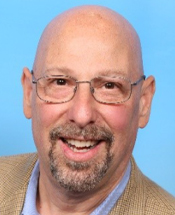 The most effective way to survive a whirlpool is to not get caught in the whirlpool in the first place. The mistake that kayakers and canoers make is that they believe that they can pass over the edge of vortex and not get pulled in.
The most effective way to survive a whirlpool is to not get caught in the whirlpool in the first place. The mistake that kayakers and canoers make is that they believe that they can pass over the edge of vortex and not get pulled in.
But it happens so quickly that you can’t escape. It’s hard to say where the outer edge of the current is. If we use the whirlpool analogy, in the senior care river, the general edge is a financial one. It is the energy drain that pulls you under.
The financial strains will generally impact staffing and safety in quick succession. In response, institutions will do all they can to reduce the largest single financial variable: payroll.
The Constant Spinning of the Revolving Door of the Employee Entrance Starts the Whirlpool. While a quick fix is reducing the headcount, this rarely can be a sustainable strategy. Running the smallest possible staffing model results in shift fatigue, which then shows up as work injuries and burn-out. In dementia care units, residents who are faced with a new caretaker on a constant basis are more likely to display aggressive behaviors putting the replacement caretaker at an increased risk of resident violence-based injury.
How can you tell if this is happening at your facility? The information is tracked by your workers’ compensation carrier or third-party administrator can give you the answer. Your broker can also give you insights as to whether the number of assaults at your facilities outpaces the industry.
What about your turnover rate? When someone quits, what does it cost in overtime costs? How about the costs associated with finding a replacement employee and training that employee? Is your organization developing a reputation as a place skilled professionals should avoid? The revolving door to the employee’s entrance creates the swirl that starts the whirlpool that ends with a reputation that begs for investigations by state and federal authorities and litigation by families of those in the facility.
The speed of the downward pull of employee attrition is further accelerated by minimizing safety initiatives. Staff shortages too often result in a lack of time resources to require and provide anything beyond the minimal safety training. This in turn brings the employees back around the downward whirlpool where the lack of training results in injuries, that results in shortages in headcount, that results in burnout.
The Heaviest Object Sinks the Fastest and Creates the Greatest Downward Pull. When I perform risk assessments at a care facility, I am not privy to the organization’s finances. I do not have to be. Just as someone can look at all the dents on a car to determine that the driver is probably unsafe, care facilities have their telltale signs. Signs might include an inadequate number of Hoyer and bariatric patient lifts on each floor, hallways lined with lifts and beds with signs stating that the equipment is out of service awaiting repair, or a storage area littered with broken equipment. About now, employee exhaustion is setting in, and the fight to get out of swirling water is starting to fail.
The Smallest, Deepest Swirls Are the Most Powerful Killers. The deeper you are drawn into a whirlpool, the less your chances of survival. Perhaps it is the additional financial strain of increased insurance costs due to the claim history from too many work-related injuries or slip-and-fall claims due to inadequate maintenance of the facility. Perhaps it is the nonrenewal of your malpractice coverage (errors and omissions) that is proving to be the tight swirl of water. Perhaps it is the state regulatory body or the Centers for Medicare & Medicaid Services showing up at your door due to a complaint. Maybe it is the sheriff serving you with a lawsuit or possibly being the lead story on the nightly news.
The 2023 AHCA Mid-Year State of the Nursing Home Industry report highlights that the two stressors for nursing homes are staffing and financial pressures. New proposed federal mandates will add to the downward pressure, which already has many nursing homes fearing for their ability to survive at the current pace.
The most common approach to survival seems to be reducing the number of beds or services. In doing so, does it successfully reduce the expenses, or does it have an equal or greater reduction in cashflow? H.L. Menken observed that, “for every complex problem there is an answer that is clear, simple, and wrong.” As we look at the current crisis in the industry, a solution that screams out is reducing the bed count. By doing so, you can reduce the headcount. Since workers’ compensation is based in part on payroll, the reduction in payroll will result in a reduction in premiums.
Clear, simple, and wrong.
If the reduction in payroll results in a straining of the workforce, the increase in the frequency and severity of your work-related claims history will increase the insurance rate, the amount paid per $100 of payroll. Your savings may not be proportionate to the payroll savings. A reduction in the bed count may reduce the number of people visiting the facility daily, but you still have to provide the same number of slip mats, the same number of housekeepers, and the same expenses of security, fire, and property maintenance activities. Even if you close off a wing or two of your facilities, you will still have to maintain them and, frankly, you will not see much, if any, savings in property insurance without expert guidance.
 In kayaking and canoeing we learn that the three best ways to avoid death by whirlpool is to, first and foremost, avoid the whirlpool. Second, keep your boat from capsizing, and third, always wear your personal flotation device. For our industry, little is different. Perform real root-cause analysis to identify those issues that are pulling you into the whirlpool so that you can avoid them. Understand the forces that are trying to capsize your vessel and provide everyone in the boat with proper safety equipment and training.
In kayaking and canoeing we learn that the three best ways to avoid death by whirlpool is to, first and foremost, avoid the whirlpool. Second, keep your boat from capsizing, and third, always wear your personal flotation device. For our industry, little is different. Perform real root-cause analysis to identify those issues that are pulling you into the whirlpool so that you can avoid them. Understand the forces that are trying to capsize your vessel and provide everyone in the boat with proper safety equipment and training.
Jeff Marshall is a kayaker and a risk and claims consultant for care providers, carriers, and third-party administrators focusing on nursing homes and assisted living facilities. He can be reached at IManageRisk4U@gmail.com.